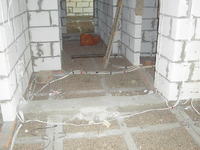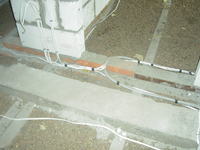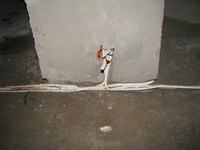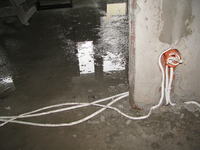Stepping on a conduit and stepping on a bare wire.
I may not express myself a bit clearly. Both the conduits and the bare wires will be trodden on. If the conduit is too tight, it breaks by itself, you do not have to trample it. The pipe gives a much greater resistance to mechanical damage to the cable.
Laying straight - under the ruler, it facilitates the work of laying polystyrene. You have to somehow cooperate with other teams.
In addition, a nice and aesthetic performance proves the performer.
The question why pipes with wires are not laid against the wall:
After 1. Because there is something like a cable zone - a minimum of 15 centimeters from walls, corners, windows.
2. In the future, someone may want to pass an installation through the ceiling. She wants to drill against the wall itself. Then what? We have drilled pipes.
kkas12 wrote: ...
Does a colleague do it on the basis of the project?
Yes. By design. In addition, the developer for whom we work at any time sends a quality controller. A guy can pay attention for 2 grains of plaster in a can and more than 5 millimeters of insulation on the wire inserted into the can. The protective conductor in the socket should also be 2.5 centimeters longer than the working conductors.
Someone asked how much it costs and gave an approximate price. A complete cottage (electrical installation) is the given amount - times 2.
 . And you can not just lay the wires under the walls, if there are passages, then a metal trough of 1 meter should be mounted with two expansion pins ???
. And you can not just lay the wires under the walls, if there are passages, then a metal trough of 1 meter should be mounted with two expansion pins ???








